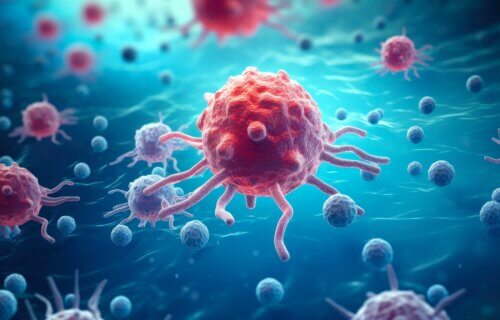PHILADELPHIA — Chimeric antigen receptor (CAR) T-cell therapy is an innovative form of cancer treatment. It actually changes a patient’s T-cells (immune cells) so that they can find and destroy cancer cells. Since its approval in 2017, the therapy has already helped thousands of cancer patients back to health. Now, a promising new report by a team with the University of Pennsylvania’s Perelman School of Medicine reveals that the likelihood of developing secondary cancers following CAR T-cell therapy is very rare.
The research team assessed over 400 patients treated at Penn Medicine to reach this conclusion. Originally pioneered at Penn, doctors have used CAR T-cell therapy to treat over 30,000 U.S. blood cancer patients. Many of those patients ran out of other treatment options. Some of the first patients treated in clinical trials have enjoyed long-lasting remissions lasting a decade or more.
Secondary cancers, such as T-cell lymphomas, are a rare risk associated with of several types of cancer treatment (chemotherapy, radiation, stem cell transplant). CAR T-cell therapy, meanwhile, is currently only approved to treat blood cancers that have either relapsed or stopped responding to treatment. As of now, all patients who receive CAR T-cell therapies have already received multiple other types of treatment. Most face dire prognoses.
The FDA recently announced an investigation into numerous reported cases of secondary T-cell malignancies, including CAR-positive lymphoma, among patients previously given CAR T-cell therapy products. Then, in January 2024, the FDA decided to begin mandating drugmakers add a safety label warning to CAR T-cell products. The FDA’s review is still ongoing, so it’s unclear if CAR T-cell therapy caused the observed secondary T-cell malignancies.
💡CAR T-cell Therapy Also Tied to Anti-Aging Benefits
Researchers in New York have developed a new therapy using these specialized immune cells to target and eliminate old, worn-out cells in the body that contribute to age-related decline.
In this case, the target is a protein called uPAR, found on the surface of senescent cells (cells which no longer divide). By targeting uPAR, these CAR T-cells can effectively locate and eliminate senescent cells.
Traditional anti-aging treatments often require continuous administration, but in this case, a single dose of CAR T-cells continued to work over time in experiments with mice.
As a leader in CAR T-cell therapy, Penn boasts longstanding, clearly established protocols for monitoring each patient both during and after treatment. This includes a follow-up period lasting 15 years after infusion. Penn also participates in national reporting requirements and databases tracking outcomes data across all cell therapies and bone marrow transplants.
“When this case was identified, we did a detailed analysis and concluded the T cell lymphoma was not related to the CAR T cell therapy. As the news of other cases came to light, we knew we should go deeper, to comb through our own data to better understand and help define the risk of any type of secondary cancer in patients who have received CAR T cell products,” says senior author Marco Ruella, MD, an assistant professor of Hematology-Oncology and Scientific Director of the Lymphoma Program, in a media release. “What we found was very encouraging and reinforces the overall safety profile for this type of personalized cell therapy.”
Among a total of 449 patients given the commercially available CAR T-cell therapies at Penn Medicine between January 2018 and November 2023, just 16 went on to develop a second cancer. Most of those secondary cancers (12 of the 16) were solid tumors (skin cancer, prostate cancer, and lung cancer).
Importantly, the study also describes one patient in particular who did develop a secondary lung tumor following CAR T-cell therapy. In this case, the team also noted an incidental T-cell lymphoma within a lymph node removed during surgery for the lung tumor.
Molecular analyses showed that the T-cell lymphoma did not harbor the CAR transgene. This means, researchers explain, that it was not a CAR-positive lymphoma, thus there is no clear connection to the CAR T-cell therapy.
“It’s important to have long-term follow-up and reporting systems in place for any new cancer treatment to understand the risks and benefits over time, so that we can—together with patients and their families—evaluate the best possible treatment options for each individual,” concludes David Porter, MD, the Jodi Fisher Horowitz professor in Leukemia Care Excellence and director of Cell Therapy and Transplantation at the Abramson Cancer Center.
“Just as Penn Medicine researchers and scientists are continually working on finding new ways to make CAR T cell therapy more effective for more patients, our team also has robust systems in place to study future cases like this so that we can contribute to a comprehensive understanding of secondary cancers in this patient population.”
The study is published in the journal Nature Medicine.
